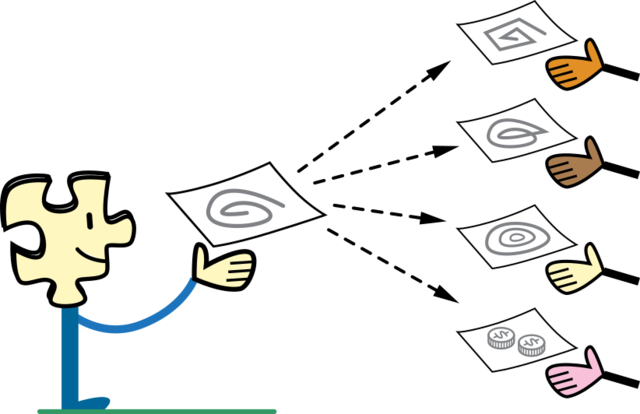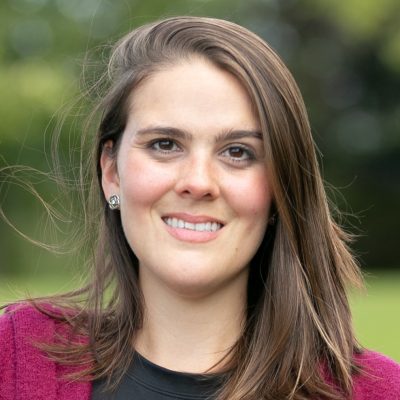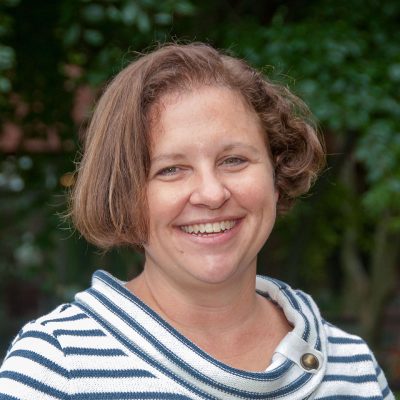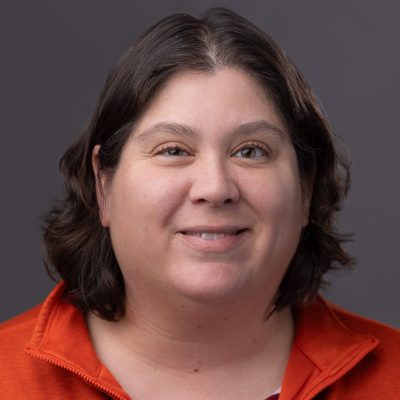3 Human Rights and the Equitable Distribution of Resources
Cailyn F. Green; Kim Brayton; and Bernadet DeJonge
- The reader will analyze the words equitable, distribution, and resources.
- The reader will distinguish the difference between equality and equity.
- The reader will identify the connection between human rights and equity.
“A right delayed is a right denied.”
-Martin Luther King Jr. (True Justice Has Been Delayed and Thus it is Still Being Denied, 1994).
The well-known quote by Martin Luther King, Jr. highlights the critical significance of human rights. In this chapter, we will explore the concepts of human rights and fair distribution of resources as they are essential to social justice.
Human Rights
Human rights are the rights that society has deemed every person is entitled to. These rights include freedom, justice, and equality in various aspects of life. Examples include being free to travel, leaving your country of origin, marrying, having a family, and owning property. Human rights include respect for all humanity and are connected to beliefs about how all people should be treated, regardless of the community in which they live (Finucane, 2017).
Before the term human rights was internationally recognized and defined in 1948, it was regulated by social relationships and interactions. Thus, every community, religion, society, or country has different views on human rights. For example, some ancient communities viewed human sacrifice as the ultimate way of showing something sacred. To be chosen for a human sacrifice meant you were chosen as the most sacred, highest person in that community (Woodiwiss, 2005). In contrast, in other communities, killing a person in the name of a deity or god would be viewed as a violation of human rights. This term was, and still is, dependent on how the community views human rights and the role in their lives.
- Why do you think we are talking about human rights in a text on social justice?
- Is social justice a human right? Why or why not?
Universal Declaration of Human Rights 1948

The Universal Declaration of Human Rights (UDHR) was proclaimed by the United Nations (UN) General Assembly in December 1948 (United Nations, n.d.). This was the first document to be internationally agreed upon regarding human rights. The UDHR is still used today as an important document, particularly in times of war and conflict between countries. The UDHR was written to protect the human rights of all, but directs particular attention to racial minorities, children, women, migrants, and people with disabilities (United Nations, n.d.).
The team who wrote the UDHR was composed of 18 members from various political, religious, and cultural backgrounds. These members included Eleanor Roosevelt (United States), Rene Cassin (France), Charles Malik (Lebanon), Peng Chung Chang (China), and John Humphrey (Canada). After finishing this document, this diverse team decided it was so important that they released it as a declaration instead of a treaty. The UDHR was meant to inform humanity that everyone had these rights, even if their government did not provide them (Global Citizenship Commission, 2016). It published a set of fundamental human rights universally protected in all parts of the world. The UDHR has been translated into over 500 languages and has paved the way for human rights treaties worldwide (United Nations, n.d.).
The UDHR opens with a preamble introducing the reader to the idea that disregard for human rights has resulted in “barbarous acts which have outraged the conscience of mankind” (United Nations, n.d., para. 2). An example is the horrific historical event of the Holocaust. The UDHR argues that all people must have fundamental rights that should be protected. If these rights are not protected, people can rebel against tyranny and oppression. This document includes human rights such as “all humans are born free and equal” (United Nations, n.d., para. 9), “everyone is entitled to all rights and freedoms set forth in this declaration” (United Nations, n.d., para. 10), and “no one shall be held in slavery” (United Nations, n.d., para. 12).
The writers of the UDHR document established three sections in the document: (1) a set of general principles, (2) the actual codification of those principles into laws, and (3) the practical and actual means of implementation (Global Citizenship Commission, 2016). Writing a declaration was one thing, but the team tasked with writing the UDHR wanted to convey a clear expectation of action regarding human rights. They believed it was important for governments to act on their declaration to create communities free of oppression and dangerous or harmful situations.
The UDHR was written in 1948. Since then, society has changed and evolved. Understanding the UDHR through the lens of today’s world is an important part of maintaining human rights worldwide. The UDHR is not merely a document to be taken at face value; it is meant to be applied in the context of our world as it currently exists. For example, when the UDHR was first written in 1948, women had limited rights. However, today, the UDHR has been interpreted more broadly to encompass rights for women, children, the disabled, and prisoners, as well as the right to sexual orientation (Global Citizenship Commission, 2016). Our government must adapt to our changing and evolving world by applying the UDHR appropriately.
Read through the UN’s Universal Declaration of Human Rights.
Video: Human rights and technology by Flynn Coleman.
Discussion Questions
- Talk about your experience of reading the Universal Declaration of Human Rights.
- Do human rights change over time? Why or why not?
- What values do you want to see incorporated into artificial intelligence in the future?
Protecting Human Rights
Even though international government agencies agree on this set of rules, human rights continue to be violated on both small and large scales. Some of this is severe in the form of governments, such as dictatorships, where one ruler decides what rights society members have (Finucane, 2017). These types of governments violate human rights by killing their people, unlawful imprisonment, and engaging in rape and other acts of violence against women. However, in some countries, human rights violations remain unclear. For example, consider the Flint, Michigan, water crisis in 2016, which denied access to clean, drinkable water to most of the city’s population. Many do not think of this as a human rights issue; however, this experience for the community of Flint violates the UDHR (Goldblum & Shaddox, 2021).
The most important aspect of upholding human rights is the ability to protect them. One way to protect human rights is through laws and policies. This is not always easy because there are often disagreements on the interpretation of the UDHR. Not everyone agrees on what actions or behaviors should be protected. That said, a just government must create laws and generate policies that protect and uphold human rights (University of Michigan, 2023).
The United States has generated multiple laws that protect human rights. An example is Brown v. Board of Education, where, in 1954, the Supreme Court determined that racial segregation in public schools was unconstitutional and violated the human right to be treated with dignity and equality (Premdas, 2013). Another example is Griffin v. Illinois in 1956. This Supreme Court ruling stated that a criminal defendant cannot be denied the right to appeal to court cases because of their inability to pay for a trial transcript (Woodiwiss, 2005). These court rulings exemplify how government laws and policies can be used to protect human rights.
The United Nations continues to work tirelessly to promote and protect human rights worldwide. One way they do this is through the Human Rights Treaty Bodies. These are committees of independent experts who monitor how countries implement the core values as expressed in the UDHR (United Nations, n.d.). The United Nations also has working groups that focus on mainstreaming these basic human rights in countries and governments.
Discussion Questions
- What do human rights have to do with social justice?
- Explain, in your own words, why human rights should be protected. How can they be protected?
- How have we utilized the concept of human rights to create policies and laws in the United States?
- How can we further use policies and laws to uphold human rights in the United States?
- Do some research: What human rights are currently being violated in the world?
- Do some research: What human rights are currently being violated in the United States?
Distribution of Resources
Social justice movements focus on achieving a fair and equitable distribution of resources. To understand what equitable distribution of resources means, it is important to first clarify some definitions. It is important to note that equality and equity are not the same things. Equity refers to finding a balance between being equal and being fair. The word “equitable” describes how something can be just and impartial to all parties involved, taking into account each party’s unique needs (Gomez & Premdas, 2013). However, this does not imply that everything is the same for everybody.
Imagine a classroom full of students. The teacher comes in and tells them that they are all getting a new pair of sneakers this year. Equal would be giving each student the exact same pair, including the same size. But, not every student in the classroom wears the same size. To make this equitable, the shoe size must be considered. This is the difference between being equal and being equitable.
Video: Equality, Equity, and Social Justice by Southern Illinois Professional Development Center.
Discussion Questions
- In your own words, describe the difference between equality and equity.
- Provide two real world examples of the difference between equality and equity.
Distribution means to split something and share it amongst the parties involved. The number of parties involved is not defined as part of the word, nor does the word “distribution” give us any glimpse into how the splitting will occur. The methods by which resources can be split include percentages, weights, and numbers.
The Markov Decision Process is a distribution model that considers supply, demand, and equity-based objectives (Fianu & Davis, 2018). The goal is to use the supply to maximize the equity in the distribution of the goods to benefit as many people as possible. Thus, goods are allocated proportionally to poorer populations who report the need for resources. The difficulty in this construct is deciding where the resources go. The entity determining where to allocate the goods must consider who needs them and determine how to distribute them equitably (Fianu & Davis, 2018).
When there is uncertainty about the goods that will be available for distribution, the method of allocating them becomes more complex. For example, consider a food bank that relies on the ebb and flow of donations. One way to compensate for an unsteady supply of goods is to treat the demand as steady and plan backward (Orgut et al., 2018). By keeping the demand the same over a year, one stable factor remains. With this one stable factor, we can then compensate for the ebb and flow of supply and allocate it equitably throughout the year (Orgut et al., 2018).

Resource is a word used to describe a supply of something currently existing. Resources can be physical, mental, actionable, emotional, or ideas. Resources include things like diamonds, food, money, mental health, mental bandwidth, emotional and physical energy, healthcare, and volunteers (Orgut et al., 2018).

In summary, equitable distribution of resources is defined as the act of sharing a supply of something in a way that is fair and based on what the parties involved need. To be able to distribute resources equitably, the needs of the parties involved must be considered. The distribution of resources should be proportional to the needs and number of parties involved (Capeheart & Milovanovic, 2007). However, this is not always the case. Food distribution is often used as an example to highlight inequitable distribution. Food is a good that is needed for human survival. While all people need food, not everyone has access to the food supply they need. Thus, food is often not equitably distributed. When this happens, government agencies and nonprofit entities, such as food banks, often step in to try and fill that need (Fianu & Davis, 2018). Other resources relevant to the social justice context include housing, food, education, jobs, community resources, health care, social support, language, literacy, representation, and political involvement (Shaw et al., 2017).
Interview with Susan Lintner, the Director of Community Impact at the Regional Food Bank of Northeastern New York
I interviewed Susan Lintner, the Director of Community Impact at the Regional Food Bank of Northeastern New York, to talk about how her agency distributes resources. Susan explained that, traditionally, they respond to requests made by food bank managers. If one food bank said they regularly had 20 people walk through their doors on a weekly basis, they would provide that food bank with food to accommodate that specific number. However, this did not accommodate those in the community who did not walk through the agency doors. The team determined that this was not equitable or “fair” as not everyone in the community who had need was being funded.
Susan informed me that the Regional Food Bank of Northeastern New York recently went through a strategic planning process to correct this previous approach. They identified that many of the 23 counties they served were not receiving enough food. The team came up with a plan to change their methods to ensure that individuals who were food insecure were able to get access to the same amount of food regardless of what county they lived in. This was done through mobile pantries, which brought food to those who did not have access to it previously. Through such efforts, food resources were made physically available for people who did not have access in the past with the intent of being more equitable in resource distribution (S. Lintner, personal communication, December 8, 2023).
If you want to learn more about the work of the Regional Food Bank of Northeastern New York, please visit their website.
Discussion Questions
- Find out how your local food bank decides to allocate resources. In your opinion, is this fair? How might it be improved?

Equitability
Who decides what is equitable? This is placed on the shoulders of whoever controls the supply of goods or resources. The entity that has the power to decide what an equitable distribution is should have an unbiased connection to both the supply holder and the population that is going to receive the goods. When the decider (e.g., the food bank manager) has a connection that can sway their decision, an equitable distribution is less likely. An example of this is if the person in charge of the food bank’s distribution has a personal or professional connection to one local mayor among the many areas his food bank serves. If the food bank manager (the decider) is swayed by this connection, such as the mayor offering them money or appealing to their personal relationship, the allocation of food may not be equitable.
Research has shown that when people are given a choice in allocating goods, they often choose what they think is the “morally right” thing to do. Generally, this is to act in an equitable manner. People are driven by engaging in prosocial behavior (Huang et al., 2019). Prosocial behavior is behavior or actions that benefit others and do not benefit the person performing the behavior. Examples of prosocial behavior throughout history include multiple ancient warriors fighting a bear to save one community member, and, more currently, cities with volunteer firefighting stations. People choose to engage in these types of behaviors, which will benefit the community or others over themselves (Huang et al., 2019).
Video: Innovation in human rights by Mallika Dutt.
Discussion Questions
- How can you advocate for human rights in your job?
- How do you practice human rights in your daily life?
Trayvon Jackson, the executive director of the African American Cultural Center, opened a nonprofit grocery store in Albany, New York in 2022. By working with 75 different organizations to open this grocery store location, the African American Cultural Center turned a previous McDonald’s location into a grocery store in an area that once only had convenience stores, bodegas (stores selling little fresh food marked up at high prices), and fast food options. Prior to this, the southern end of Albany was identified as a food desert for many years.
Discussion Questions
- Describe what a food desert is in your own words.
- What do food deserts have to do with equitability of resources?
- Who decides when and where a grocery store opens? Why is this important?
- Why might people struggle to access groceries? Why might they choose a convenience store or bodega over a grocery store?
- How do we solve the problem of food deserts?
Thoughts from the Authors
I’d like to provide a little background on me and why this chapter was so important for me to write. I went to a predominantly White undergraduate university and a predominantly White graduate school. My experience in higher education was mostly with individuals similar to myself: middle class, using financial aid, but having a supportive family to help out when needed. When I moved to Portland, Oregon, and began working as an instructor at Portland Community College (PCC), I quickly learned that my higher education experience was not the only one. Portland Community College had an extremely high percentage of not only first-generation college students, but also first-generation English speakers. My Department Chair, Adrian Rodriguez, shared with me the example I shared with all of you regarding sneaker size. This was how he explained equality versus equity to me, and this example really resonated. I have been able to use this example in most of my counseling courses, as well as keeping it in mind during my role as an academic mentor.
Sincerely,
Cailyn Green
When I think about this topic, I always remember the warning given by one of my early bosses/mentors, a gentleman named George Bennett. He worked with a number of companies spanning numerous industries, and he liked to raise awareness of the challenges of equitable distribution. One story he would tell is of a company executive who had a million dollars to give away to his employees. By not considering equitable distribution, he offended everyone he gave that money to. While one moral of his story was that you can never make everyone happy, the more important understanding is about identifying what is equitable and recognizing how different people are affected.
Sincerely,
Kim Brayton
- Provide your own example of something being equal versus equitable.
- How would you define human rights in your own words? What rights do all people have]? What about those who do not have those rights?
- How can bias impact the equitable distribution of goods? What other factors might impact the equitable distribution of goods?
- Thinking back to the case study regarding the food desert in Albany, New York, can you think of other ways discrimination has led to or could lead to inequitable distribution of resources?
References
Capeheart, L., & Milovanovic, D. (2007). Social justice: Theories, issues, and movements. Rutgers University Press. https://doi.org/10.36019/9780813541686
Fianu, S., & Davis, L. B. (2018). A Markov decision process model for equitable distribution of supplies under uncertainty. European Journal of Operational Research, 264(3), 1101–1115. https://doi.org/10.1016/j.ejor.2017.07.017
Finucane, B. (2017). Human rights. Mason Crest.
Goldblum, J. S., & Shaddox, C. (2021). Broke in America: Seeing, understanding, and ending US poverty. BenBella Books.
Gomez, E. T., & Premdas, R. (Eds.). (2013). Affirmative action, horizontal inequalities, and equitable development. Affirmative action, ethnicity, and conflict (pp. 1-27). Routledge. https://doi.org/10.4324/9780203078839
Global Citizenship Commission. (2016). The universal declaration of human rights in the 21st century: A living document in a changing world. G. Brown (Ed.). Open Book Publishers. http://www.jstor.org/stable/j.ctt1bpmb7v
Huang, L., Lei, W., Xu, F., Yu, L., & Shi, F. (2019). Choosing an equitable or efficient option: A distribution dilemma. Social Behavior and Personality, 47(10), 1-10. https://doi.org/10.2224/sbp.8559
Orgut, I. S., Ivy, J. S., Uzsoy, R., & Hale, C. (2018). Robust optimization approaches for the equitable and effective distribution of donated food. European Journal of Operational Research, 269(2), 516–531. https://doi.org/10.1016/j.ejor.2018.02.017
Premdas, R. (2013). The struggle for equality and justice: Affirmative action in the United States of America. In E. T. Gomez & R. R. Premdas (Eds.), Affirmative action, ethnicity, and conflict (pp. 43-66). Routledge. https://doi.org/10.4324/9780203078839
True Justice Has Been Delayed And Thus Is Still Being Denied. (1994). The Philadelphia Tribune (1884), 111(11).
Shaw, L. J., Pepine, C. J., Xie, J., Mehta, P. K., Morris, A. A., Dickert, N. W., Ferdinand, K. C., Gulati, M., Reynolds, H., Hayes, S. N., Itchhaporia, D., Mieres, J. H., Ofili, E., Wenger, N. K., & Bairey Merz, C. N. (2017). Quality and equitable health care gaps for women: Attributions to sex differences in cardiovascular medicine. Journal of the American College of Cardiology, 70(3), 373–388. https://doi.org/10.1016/j.jacc.2017.05.051
United Nations. (n.d.). Universal declaration of human rights. United Nations Office of the High Commissioner for Human Rights. https://www.un.org/en/about-us/universal-declaration-of-human-rights
University of Michigan. (2023). Government obligations. https://humanrightshistory.umich.edu/accountability/obligationr-of-governments/
Woodiwiss, A. (2005). Human rights. Routledge.
Media Attributions
- Eleanor Roosevelt UDHR © FDR Presidential Library & Museum is licensed under a CC BY (Attribution) license
- Sharing Character © Wikimedia Foundation adapted by Yuriy Bulka is licensed under a CC BY-SA (Attribution ShareAlike) license
- Street Food © brainbox tamil is licensed under a CC BY-SA (Attribution ShareAlike) license
- Council President Clarke hosts Holiday Food Distribution © Jared Piper/PHLCouncil is licensed under a CC BY (Attribution) license




